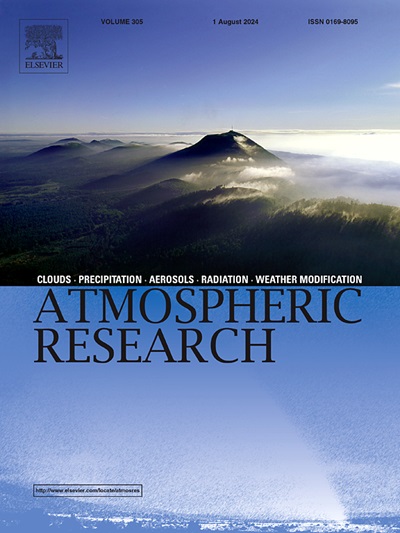Spatial-temporal heterogeneity of carbon dioxide concentration in Beijing, Tianjin, and Hebei based on interpretable theory
IF 4.5
2区 地球科学
Q1 METEOROLOGY & ATMOSPHERIC SCIENCES
引用次数: 0
Abstract
With rapid urbanization, the Beijing-Tianjin-Hebei (BTH) region has experienced intensifying greenhouse effects due to increases in global carbon dioxide (CO2) concentrations. Therefore, studying the spatial and temporal heterogeneity of CO2 concentrations and understanding the causes of regional climate change have become crucial. Although previous studies have focused on calculating regional carbon sources and sinks, explicit and directly interpretable analyses targeting CO₂ concentrations per se remain limited. Based on multi-source satellite data, this study systematically analyzed changes in the spatiotemporal distribution of CO2 concentrations in the BTH region and its dynamic relationship with environmental factors from 2003 to 2021 using long short-term memory network and interpretability theory models. The results showed that CO2 exhibits a high value area with spatiotemporal flux that shifts from northwest to southeast and has a seasonally fluctuating growth rate of 2.29 ppm/year. Nightlight (NTL) data were highly correlated with the CO2 concentration (0.98), whereas the correlation coefficient between the two centers of gravity was 0.57, indicating a moderate effect on CO2 concentration increases and spatial changes. Moreover, the normalized vegetation index (NDVI) (0.92) was most strongly correlated with interannual changes in CO2, followed by precipitation (0.51), temperature (0.44), and solar radiation (0.14), and the contributions of diurnal variations in these parameters to the spatiotemporal characteristics of CO2 are ordered temperature (6.79) > NDVI (6.36) > solar radiation (2.20) > precipitation (1.66). Overall, this study enhances our understanding of the spatiotemporal characteristics of CO2 concentrations in the BTH region and reveals the driving effects of different factors, especially with regard to natural factors that present nonlinear change characteristics. Moreover, our findings have theoretical and practical significance for reducing CO2 concentrations and mitigating greenhouse effects in the BTH region and other industrial city clusters.
基于可解释理论的京津冀地区二氧化碳浓度时空异质性
随着城市化进程的加快,由于全球二氧化碳浓度的增加,京津冀地区的温室效应日益加剧。因此,研究CO2浓度的时空异质性,了解区域气候变化的成因具有重要意义。虽然以前的研究侧重于计算区域碳源和碳汇,但针对二氧化碳浓度本身的明确和直接可解释的分析仍然有限。基于多源卫星数据,利用长短期记忆网络和可解释性理论模型,系统分析了2003 - 2021年BTH地区CO2浓度时空分布变化及其与环境因子的动态关系。结果表明:CO2呈高值区,时空通量由西北向东南移动,季节性波动增长率为2.29 ppm/年;夜灯(NTL)数据与CO2浓度高度相关(0.98),而两个重心之间的相关系数为0.57,表明对CO2浓度增加和空间变化的影响中等。归一化植被指数(NDVI)与CO2年际变化的相关性最强(0.92),其次是降水(0.51)、温度(0.44)和太阳辐射(0.14),这些参数的日变化对CO2时空特征的贡献顺序为温度(6.79)和太阳辐射(0.14);NDVI (6.36) >;太阳辐射(2.20)>;降水(1.66)。总体而言,本研究增强了我们对BTH地区CO2浓度时空特征的认识,揭示了不同因素的驱动作用,特别是自然因素的非线性变化特征。研究结果对北京市及其他产业城市群降低CO2浓度和减缓温室效应具有重要的理论和现实意义。
本文章由计算机程序翻译,如有差异,请以英文原文为准。
求助全文
约1分钟内获得全文
求助全文
来源期刊

Atmospheric Research
地学-气象与大气科学
CiteScore
9.40
自引率
10.90%
发文量
460
审稿时长
47 days
期刊介绍:
The journal publishes scientific papers (research papers, review articles, letters and notes) dealing with the part of the atmosphere where meteorological events occur. Attention is given to all processes extending from the earth surface to the tropopause, but special emphasis continues to be devoted to the physics of clouds, mesoscale meteorology and air pollution, i.e. atmospheric aerosols; microphysical processes; cloud dynamics and thermodynamics; numerical simulation, climatology, climate change and weather modification.
 求助内容:
求助内容: 应助结果提醒方式:
应助结果提醒方式:


